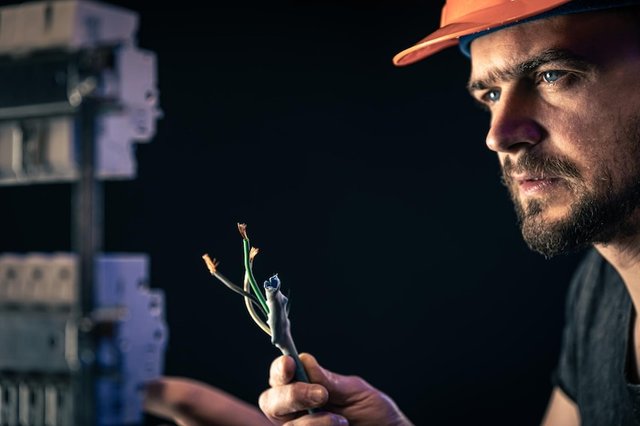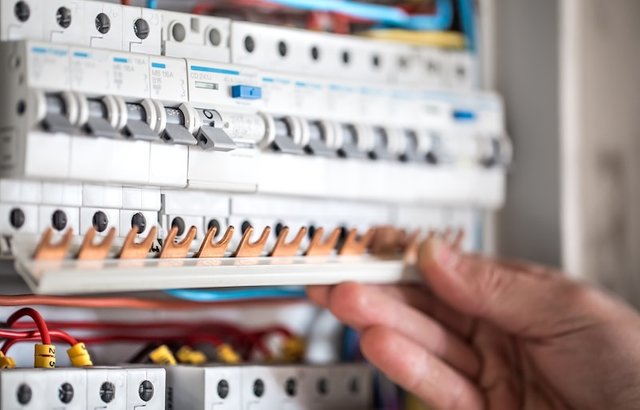
When building a house, it is essential to have a source of electricity and water. These utilities are necessary for things to get simpler and construction costs to increase. This article will teach you about electrical connections and how an emergency level 2 electrician can help you. These are necessary and can be temporary, in the case of those for the construction site, or permanent, for supplying the house with electricity. The electrical connection represents the installation that makes the connection between the low voltage distribution network of the supplier and that of the consumer, and level 2 ASP knowledge is necessary to get the job done.
Why Level 2 ASP Is Needed?
The connection can be underground or aerial, such as the cable or aerial distribution network. For this procedure, level 2 ASP experience is needed. The low voltage is the one people usually use in households to power appliances, computers, lamps, etc. earth. Aerial branches ensure the connection between the overhead conductors from the overhead electrical distribution line of the energy supplier and the subscriber's branch. Depending on the consumer's position in relation to the overhead low-voltage network, two types of electrical connections are distinguished: with or without crossing.
An Emergency Level 2 Electrician Can Help
As the name says, it is about connections with crossing when the electrical network is on the opposite side of the road, compared to the location of the consumer or without crossing, when the consumers and the electrical network are on the same side of the road. Underground branches - This type of connection ensures the connection between the electric distribution network cable and the subscriber's connection slot. The underground electrical connections can be made directly by an emergency level 2 electrician from the main power cable, with the help of derivation sleeves.
They can also be connected from a main niche or from an overhead network to supply consumers where overhead electrical connections cannot be made. The electricity company's grid tie solution is stable depending on the proper technique. If the technical part is something that you already understand, you also need to know that you will need lots of documents for these operations. From the property dead, the cadastral plan, the area, the location notice of the energy supplier, and the position of the general electrical table, you need a lot of documents to start the process.
What Are the Underground Electrical Connections?
After completing the necessary documents, the first step in starting the splicing works has ended. What you want to do now is find a level 2 ASP and start the job. The underground electrical connections ensure the cable connection from the electrical distribution network to the subscriber's connection niche. The underground electrical connections can be connected directly from the main power cable, with the help of a derivation sleeve, in a main niche, or from an overhead network to supply some consumers to which overhead connections cannot be made.
Underground electrical connections can be considered to be composed of two parts:
• part of the electrical connection from the outside of the building, consisting of the connection from the low-voltage distribution line to the subscriber's building, made with an underground cable;
• Part of the internal connection mounted in the building includes the equipment for the connection niche and the internal columns from the niche to the settlement counter.
These things may be hard to understand, but no worries. When you contract an emergency level 2 electrician, he will explain all the steps to be taken in terms you can easily understand.
What Is an Overhead Electrical Junction?
The overhead electrical connection ensures the connection with overhead conductors from the overhead electrical distribution line of the energy-supplying company to the subscriber's branch. That is a job for a level 2 ASP; therefore, they are those to call for the job. Depending on the position of the consumers about the low-voltage overhead network, two types of electrical connections are distinguished:
a. Electrical connections without crossing when the electrical network is on the same side of the road as the consumers.
b. Electrical connections with crossing, when the electrical network is on the opposite side of the road, compared to the consumers.
These electrical connections are, in turn, divided into two other categories according to how the entrance to the building is made:
• Electrical outlets with wall support when the building has a height greater than 4 m from the eaves.
• Electrical connections with the backing on the building when it has a height below 4 m at the eaves.
After conducting the studies and measurements on the ground, the supplying company draws up the quotations and the work notes to execute the connection.

What About Aerial Connections? How Do They Work?
Aerial electrical connections can be considered to be composed of two parts:
• The first one is part of the electrical connection from outside the building, consisting of the connection from the low-voltage distribution line to the subscriber's building, made with overhead conductors by the emergency level 2 electrician.
• The second one is the part of the internal electrical connection mounted in the building, including the equipment of the branch, the descending column from the supports on the structure and the branch, and the internal columns from the branch to the settlement meter.
The electrical connection represents the low-voltage installation intended to supply electricity to a consumer, executed from the electrical distribution line to the consumer's electricity meter.
The main parts of the electrical connection are:
• the connection itself, which is the connection from the overhead or underground electric line to the branch (connection niche) made by the level 2 ASP;
• branching groove (niche), which is a parallelepiped gap arranged in the wall or specially built, in which the electrical equipment necessary to protect the electrical column and distribute the electrical energy is mounted;
• the electrical column is the link between the wireless equipment and the subscriber's meter.
The specifications of this project apply to the execution of low-voltage aerial electrical connections intended to supply electricity to consumers who require low electrical power for use installations. They do not apply to connections with twisted conductors. As far as aerial connections are concerned, only those without aerial safety are treated. All operations necessary for this type of work are treated to standardize the respective technology. The technological process of the execution of the connections refers only to the operations performed without tension by an emergency level 2 electrician. The project specifications will apply to new works and capital repairs.